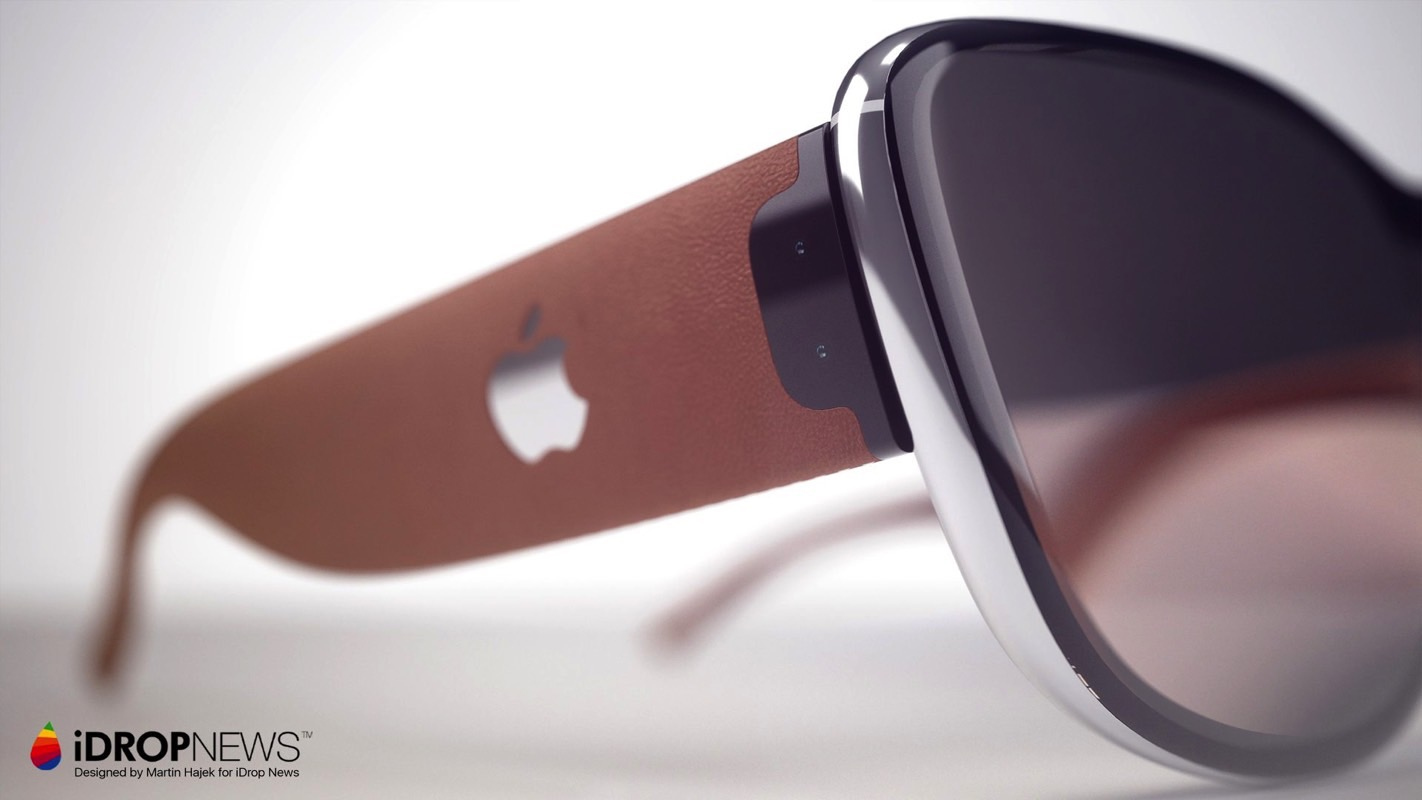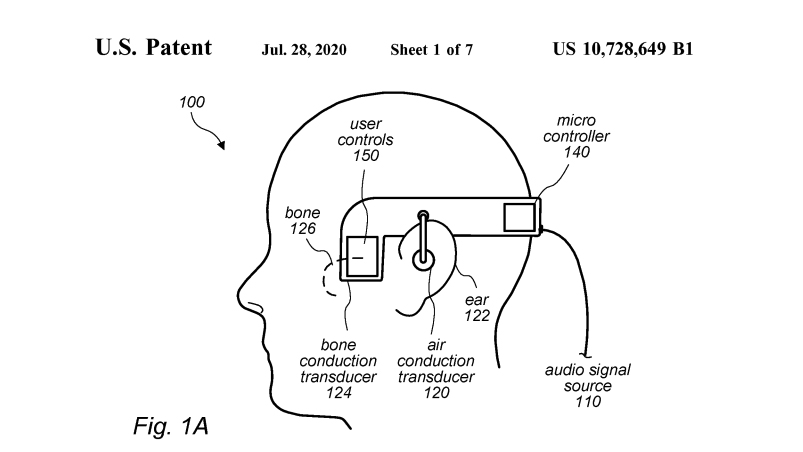Apple Glass could replace your AirPods — here's how

Apple's Apple Glass wearable may be its first device to benefit from a new bone-conducting audio system.
That's the gist of a patent (via Patently Apple) that discusses adding bone conduction tech to a personal audio device to create a unique hybrid system.
- Check out our Apple AirPods Review
- Samsung Galaxy Buds Live review: Are the AirPods killers here?
- Just in: Cadillac Lyriq: GM's stunning answer to Tesla revealed
We saw the first part of this patent last week, detailing how the bone conduction method would work. But a more explicit mention of "a wearable computing device such as a pair of augmented reality or virtual reality glasses" immediately brings the Apple Glasses to mind.

Any standard pair of earbuds uses air conduction to transmit sound — with a speaker's vibrations transferring the sound to your ear. Bone conduction uses the bones inside your head to transfer the sounds instead, via a single point of contact or several.
By conducting sound via bone, headphones or earbuds don't need to block your ear canal, which would in theory mean clear sound while still being able to hear the outside world. That would be perfect if you wanted to listen to music or have a phone conversation while still remaining aware of your surroundings, or if you had a hearing impairment that meant normal headphones don't work effectively for you.
The problem with bone conduction is that it works its best with lower pitched sounds. Not only do higher pitched sounds struggle to transmit through bone, but it also causes noticeable vibrations, which would likely be very irritating for many users.
This is why Apple's patent, filed with the USPTO, suggests a hybrid solution. Its patent, which has the not-particularly catchy official name of "Multipath audio stimulation using audio compressors", combines both bone and air conduction into one device, or potentially two separate units working in tandem.
Get instant access to breaking news, the hottest reviews, great deals and helpful tips.
The system first splits an audio signal into three parts: low, mid and high frequency sounds. The low frequency and mid-frequency signals are sent via bone conduction, potentially split among multiple sub-components, while high frequency signals are taken care of by air conduction. In some versions of the device discussed in the patent, the exact settings can be altered by the user to their preference, either on the device itself or via a GUI.
The patent also suggests this technology could be used in "a headphone, a headset, an earpiece, a hearing aid, or the like." While the AirPods and AirPods Pro would be an obvious place for this tech to be used beyond the Apple Glasses, it could also be used in a pair of over-ear headphones (like the rumored AirPods Studio), a new AirPods form factor, or even a medical device.
In order to reduce the tickling sensation that bone conduction can cause, the patent also details how it will compress the audio to reduce its dynamic range, while balancing it with the air conduction sounds so the audio doesn't seem off-kilter to the user.
These aren't groundbreaking ideas by themselves. Bone conduction has been known about for decades, and is frequently found as a feature in hearing aids. But this patent feels like a good sign that Apple actually wants to turn this concept into a real product, as opposed to just staking a claim on a cool-sounding idea.
The Apple Glass headset is almost definitely in development according to major leaks, but they're not expected to appear until next year at the earliest. In the meantime, we've still got the normal AirPods and AirPods Pro, which are some of the best wireless earbuds around. We're expecting refreshed versions to appear in the next year or so, but any models with this new bone conduction tech will likely be several more years away.

Richard is based in London, covering news, reviews and how-tos for phones, tablets, gaming, and whatever else people need advice on. Following on from his MA in Magazine Journalism at the University of Sheffield, he's also written for WIRED U.K., The Register and Creative Bloq. When not at work, he's likely thinking about how to brew the perfect cup of specialty coffee.
